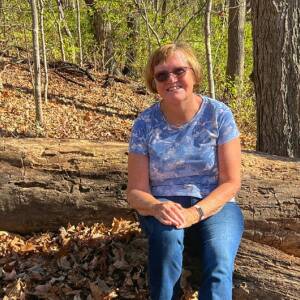Cottage, Pembridge
Monday
Today, accompanied by my brother-in-law Stuart, we toured much of the Herefordshire Black and White Villages trail. Unfortunately, Janet was unable to join us. The Black and White Village trail covers 40-miles round Herefordshire villages, with many examples of timber-framed buildings and churches in their village settings. The trail begins in Leominster, then proceeds through the villages of Weobley, Pembridge, Eardisley, Dilwyn, Kinnersley, Sarnesfield, Lyonshall, Kingsland, Kington, Eardisland, and then back to Leominster. Most of the houses on the Black & White Trail are timber-framed - the framework of the house was made from green, unseasoned, oak, and the panels between were filled with woven wood lathes which were then covered with plaster, or sometimes with brick. The panels were painted with limewash which was tinted with locally sourced natural pigments such as the local earth or ox blood. Painting the beams black and the panels white was a more recent idea. Many of the houses date from the sixteenth and seventeenth centuries, and timbers were often left unpainted to weather naturally, sometimes both beams and panels were limewashed. In the eighteenth century stucco and stone were considered more fashionable than the previous vernacular style, and some timber-framed houses were plastered, with the beams covered up. Throughout the nineteenth and twentieth centuries, many houses were restored and their timbers exposed. The beams were often painted black and the panels white to draw attention to the patterns of the timber framing. Now, some houses have had the paint removed from the beams to reveal the natural colour of the weathered wood again, and the panels have been limewashed in soft earth tones; pink, beige and yellow. These are relatively few, however, and most are still the iconic black and white. This particularly attractive cottage, with the red rambling rose was in the village of Pembridge.

Comments
Sign in or get an account to comment.


